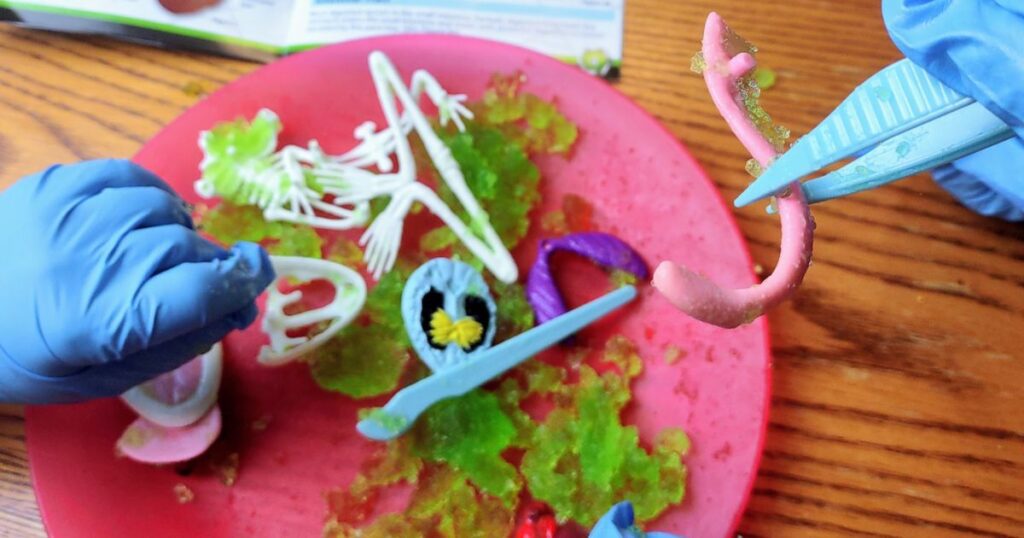
Dissect a Fake Frog
Learn about the anatomy of our amphibian friends.
— May 21, 2024
Does the thought of dissecting a frog make your stomach turn? If it does, then consider dissecting one that is fake. And don’t let the learning begin or end there. You’ll find book suggestions and extension questions for you to ask your preschooler.
As an Amazon Associate, Playing for Hours earns from qualifying purchases.
Fake Frog Kit
The organs and skeleton are suspended in a green gelatin structure. Your child will cut through the gelatin to reveal the ribs, heart, lungs, stomach, etc. Also, the skull can be separated from the jaw to reveal the brain. Life-like without the mess, smell, or hurting a real amphibian.
Since we’re working with a 4-5 year old, the gelatin is much safer than a pickled, dead frog. Also, your child doesn’t have to worry about handling the parts gently because they won’t fall apart, being plastic.
Included in the kit is a dissection guide booklet, plastic scalpel and tweezers, and two refill gelatin packets so your child can dissect again and again.
If you’re interested in the kit check it out here:
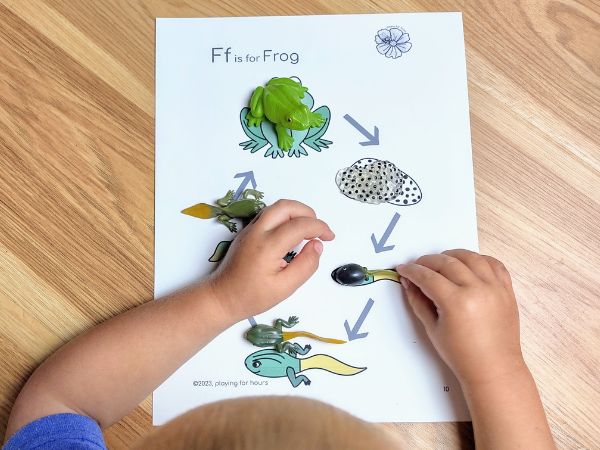
Before Dissection
Surprisingly, when it comes down to it, it’s not all about the kit. To make this a complete and educational lesson for your child, they need information front-loading. This means, we need to read books, play games, and engage them in the fascinating world of frogs before we cut one open.
If you’re interested in other related activities check out Ff is for Frog. You’ll find activity ideas, free printable, coloring pages, and book suggestions.
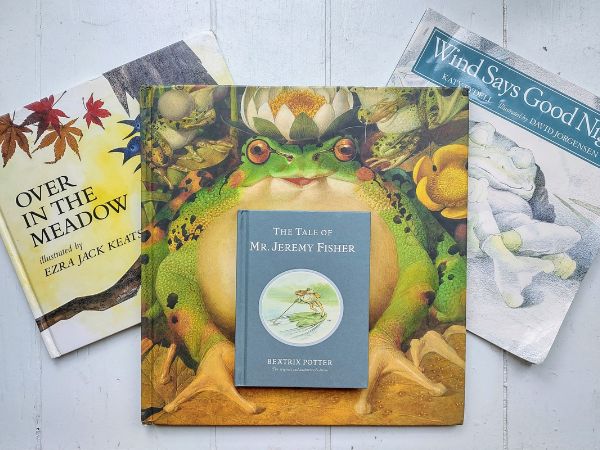
Frog Books
The list below are my absolute favorite books to read with my preschooler the week we’re dissecting a frog. I have not included “textbook” titles but those can be obtained at your local library. These books will still communicate a frog’s habitat, diet, life cycle and may offer a whimsical look at the world of our amphibian friends.
Wind Says Goodnight by Katy Rydell
The Tale of Mr. Jeremy Fisher by Beatrix Potter
Frog Song by Brenda Z. Guiberson
Over in the Meadow by Arnold Lobel
All About Frogs by Jim Arnosky
The Children’s Book of Virtues: Why Frog and Snake Never Play Together by William J. Bennett
Letter of the Week: Ff is for Frog includes additional book, poem, and song suggestions so be sure to check it out!
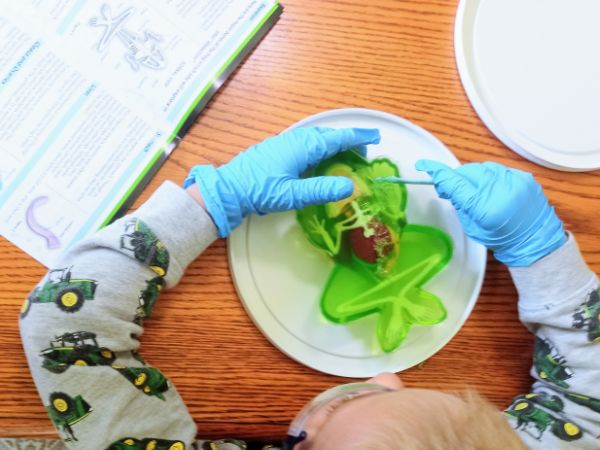
Dissection
Setting the stage
Even though my child is too young to do any dangerous science experiments I still enjoy making it a complete experience. I pull out the extra-small disposable kids’ gloves and the safety glasses. Here is the link to my favorite safety glasses, they have fun colors and fit even my two year old’s head.
When we’re ready to dissect, the kit is all ready to go. Additionally, I keep a couple plates nearby. One for the extra gelatin and the other for examining the organs and skeleton.
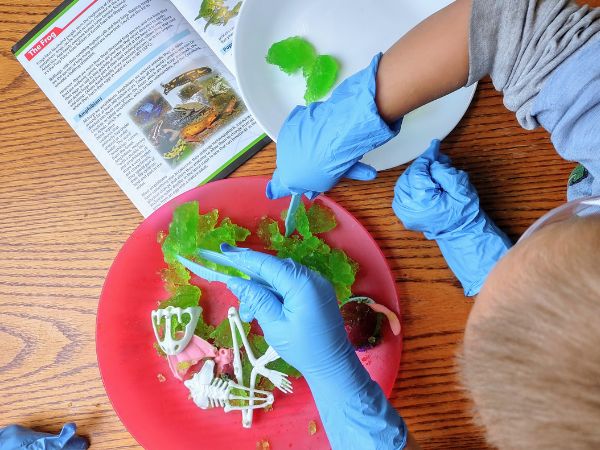
Cutting in
I reference the provided guide booklet so I can identify or confirm my child’s guess as they pull out various parts. The booklet also provides more insight into the function of each organ that is valuable to read as your child dissects. Do not get too bogged down in this because engaging with your child during the process is more important. You can engage with them by asking questions, I’ve provided suggestions and answers to get you started below.
Questions while dissecting:
- What does the skeleton do? – Provides structure for their body and protects important organs.
- The frog has a heart, do we have a heart? What does the heart do? – pumps blood throughout our bodies.
- A frog has lungs, do we have lungs? Do we use them the same? – For the most part we do, but only above the water. Frogs also have the capability to breathe underwater by absorbing the oxygen from the water through their skin.
- Where is the frog’s brain and what shape is it? -In its head and part of it fits between the eyes.
- Does our brain fit between our eyes? -No, our brain is large and round.
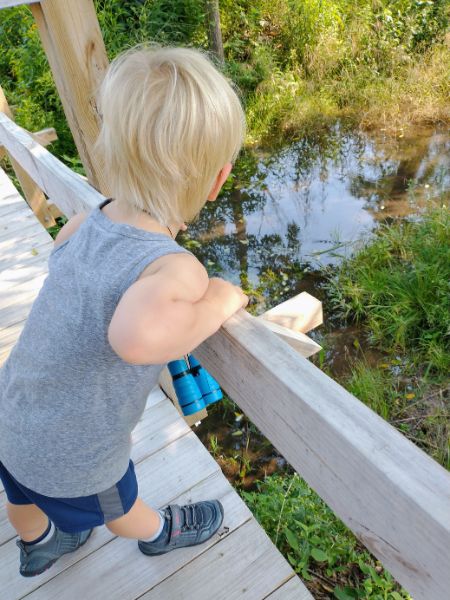
After Dissection
Don’t hesitate to extend the learning even further by going hunting at a local nature preserve. Or if it’s not the right time of year, then raise your own at home! This is a bit of a commitment but with home learning, the sky’s the limit!
You can also show educational videos from YouTube, these can communicate the many fascinating sounds frogs make and so much more. Don’t forget this kit includes extra packets to remake the frog to dissect. Your kiddo will probably even want to help remake the mold, mine did!
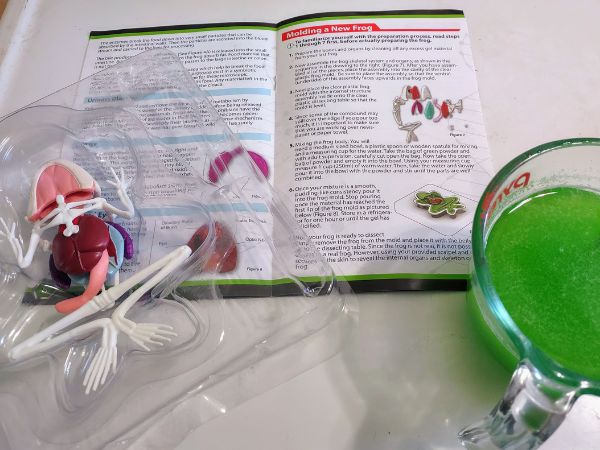
The Fascinating World of Our Amphibian Friends
From books to dissection we offer our children the chance to step into a frog’s world and the inner workings of their bodies. Don’t let your child’s age deter you from this exciting science experiment. With your supervision and guidance dissecting a fake frog will encourage your child to learn more about these interesting and fascinating creatures. If your child enjoyed this activity please leave a comment! Share the additional questions you might have asked your child and any tips you might have to offer.
This activity is a part of a week of lessons, Ff is for Frog. To check it out by following the link. Also, this is only one week in a twenty-six week curriculum for preschoolers. Check it out at the button below, entirely free.
How To Dissect A Fake Frog
Activity Instructions
Materials needed
Fake frog dissection kit
*Goggles or safety glasses
*Gloves
Instructions
1. Set up a workstation with safety glasses and gloves.
2. Follow the instructions given by the dissection kit.
3. Dissection kits usually come with reading material which will be handy for you to reference while your child is dissecting.
4. Allow your child to explore the innards and be present with them to help name the body parts as they encounter them.
5. Ask questions as your child dissects.
6. Once your child has finished dissecting you can replace the body parts and use the extra packets of gelatin to “remake” the frog and do it all over again!
Recent posts on the blog.
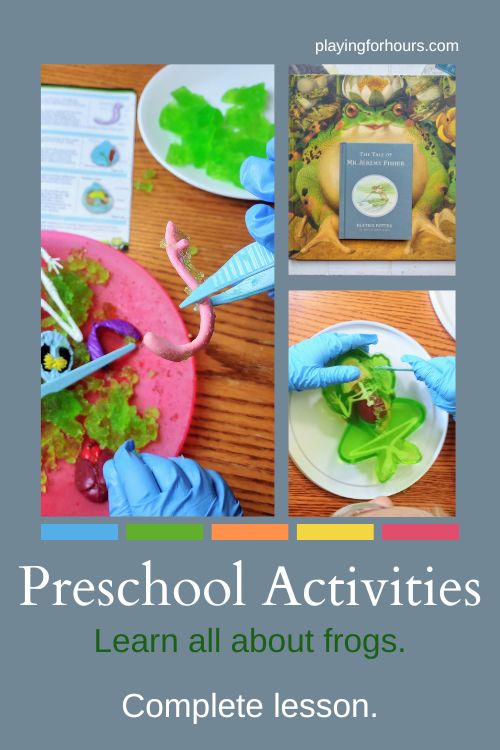
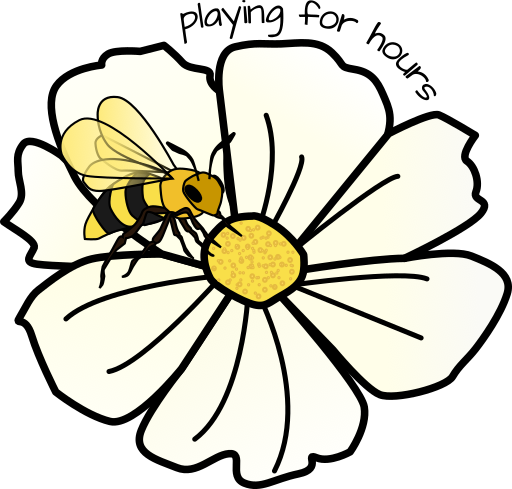
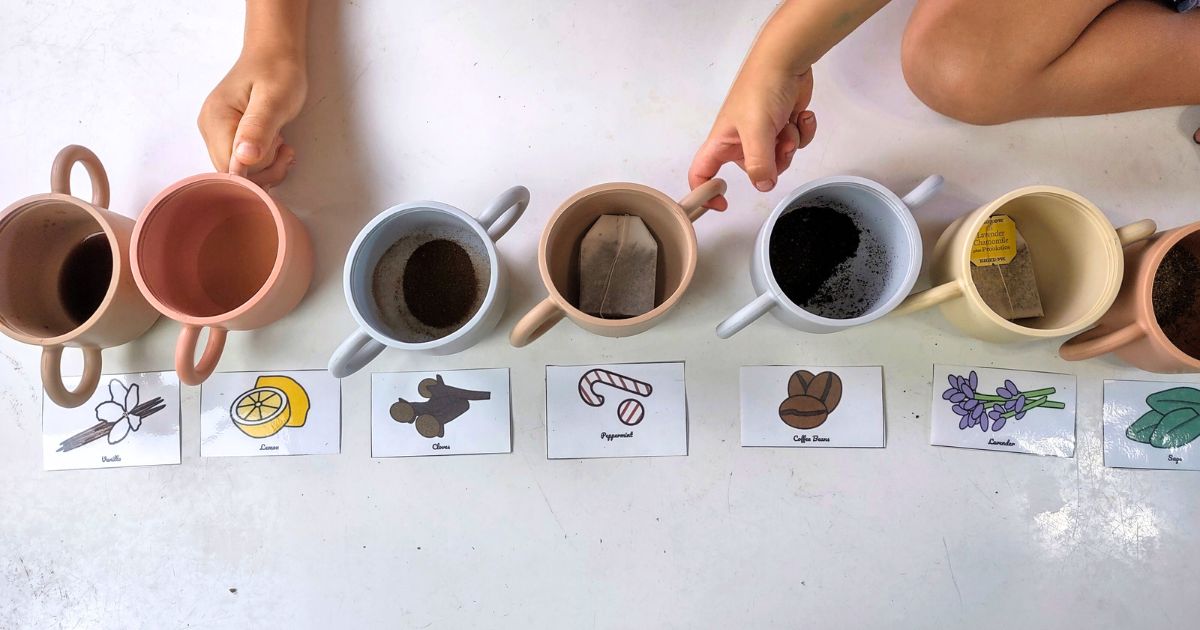
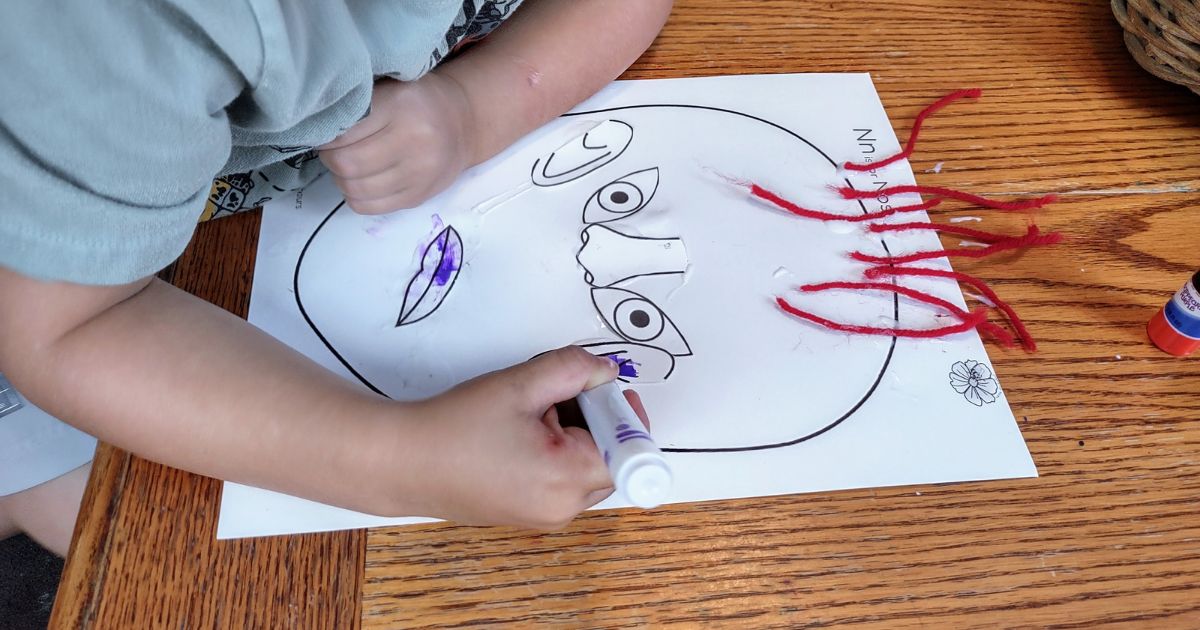
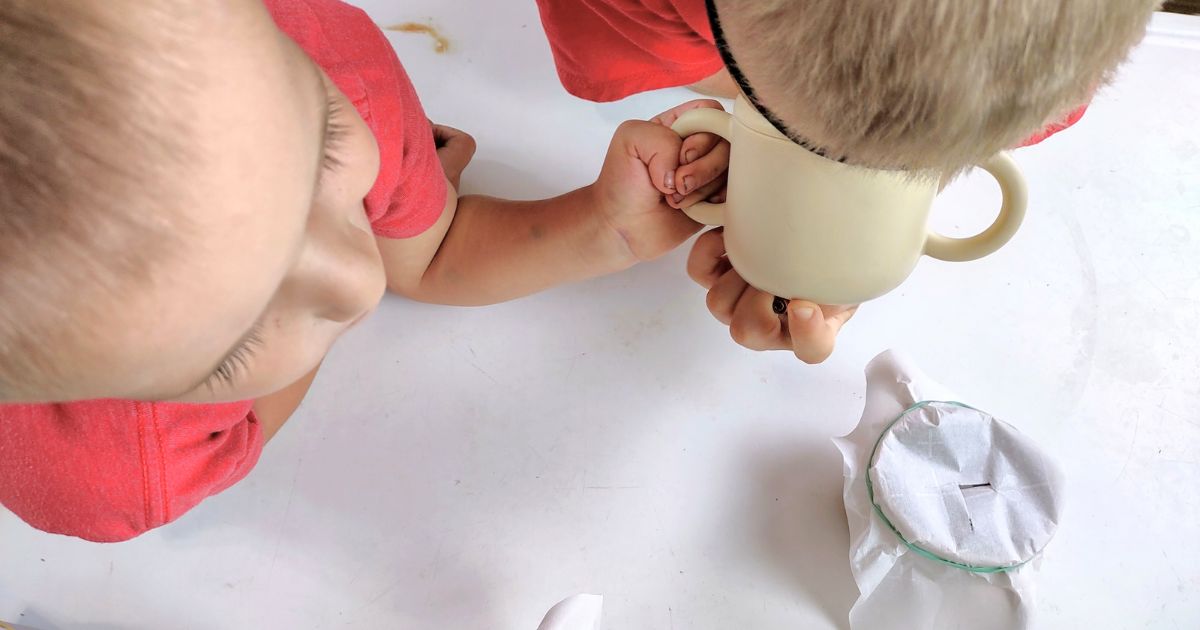
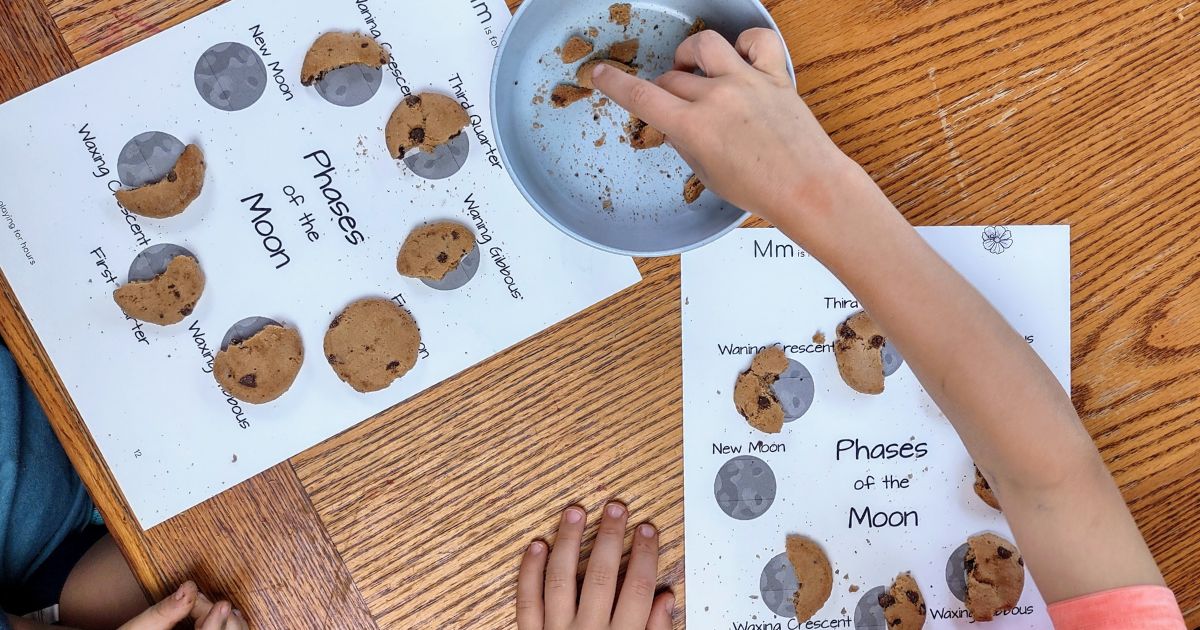

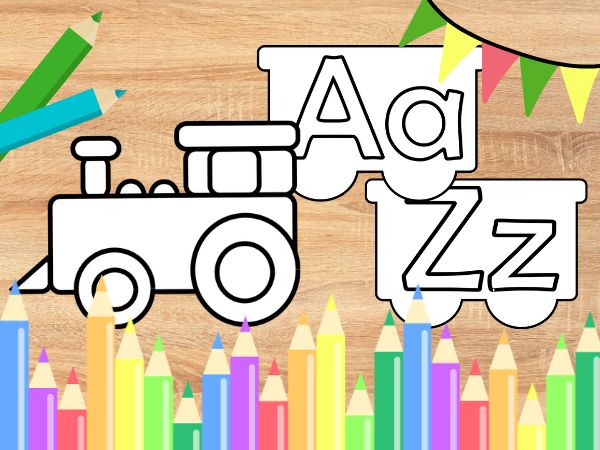
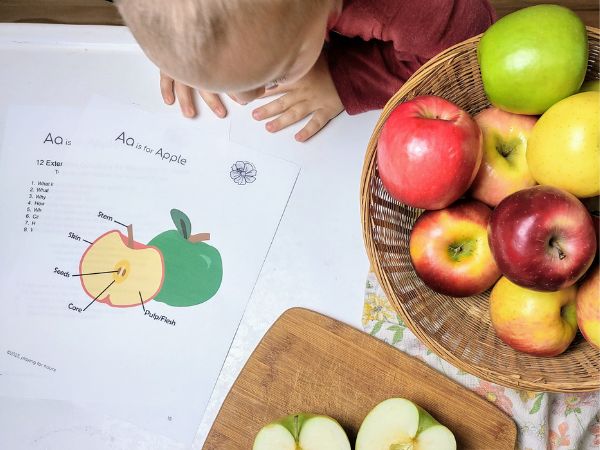
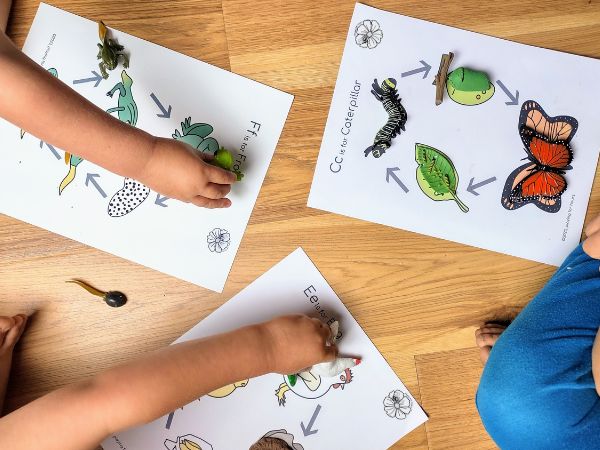
Leave a Reply